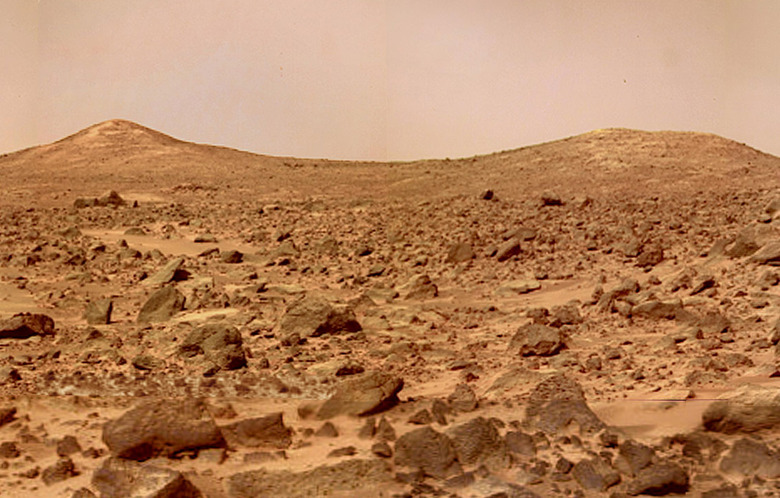New NASA Study Suggests Mars Is Hiding A Lot Of Water
When you look at Mars today you see a mostly dry, dusty orb with a thin atmosphere, lots of wind, and a mysterious history. That wasn't always the case, of course, and over the past decade or so scientists have produced a lot of evidence to suggest that Mars was once very, very wet. In fact, it's believed that Mars was once entirely covered with water, and since we don't see that water today, something must have happened to it. But what?
According to a new study funded by NASA, the prevailing theory that Mars' weak magnetic field allowed the solar wind to slowly strip away both its atmosphere and its water may not be accurate. In fact, based on data gathered over a long period of time and amassed in NASA's PDS, or Planetary Data System, it would seem that the majority of the water on Mars never left at all.
A research team from multiple institutions as well as NASA and the Jet Propulsion Laboratory used the data available to calculate the water loss of Mars. What they found was that the notion that Mars simply had its water stripped away didn't mesh with the data, and there had to be another explanation for why the surface of Mars isn't covered with water like it once was.
"Atmospheric escape doesn't fully explain the data that we have for how much water actually once existed on Mars," Eva Scheller, lead author of the work and Caltech Ph.D. candidate, said in a statement. So where did it go? Well, if the researchers are correct, the water didn't actually go anywhere, it simply changed.
One of the keys to coming up with the answer to this puzzling anomaly is the existence of deuterium, which is a version of hydrogen with both a proton and a neutron, instead of a single proton as is the case with most hydrogen atoms. The ratio of "regular" hydrogen to deuterium can provide a clue as to how much hydrogen existed and was lost in the atmosphere. deuterium is heavier than the more common form of hydrogen and, because of that, more of it would be left behind if the bulk of the regular hydrogen was lost to space.
Based on the levels of hydrogen on Mars, this doesn't appear to have been the case, which means the hydrogen (and the water that held so much hydrogen) was affected by some other force. The researchers say that it's likely a huge percentage of the hydrogen was trapped in minerals that now make up the planet's crust. Because Mars doesn't recycle its crust like Earth does, that hydrogen has no natural means of escaping.
NASA explains:
When water interacts with rock, chemical weathering forms clays and other hydrous minerals that contain water as part of their mineral structure. This process occurs on Earth as well as on Mars. On Earth, old crust continually melts into the mantle and forms new crust at plate boundaries, recycling water and other molecules back into the atmosphere through volcanism. Mars, however, has no tectonic plates, and so the "drying" of the surface, once it occurs, is permanent.
So, Mars might still have the majority of the hydrogen that it once had in the form of water, but that water gradually became something else entirely.
